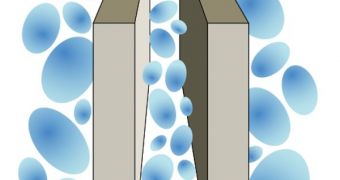In theory, some types of nanoparticles should be able to conglomerate into molecular clusters on account of the fact that Casimir forces tend to balance each other. Achieving such structures would be a considerable breakthrough, especially when considering that it was only in 1997 that the Casimir force was accurately measured for the first time. In more recent times, it has become obvious that, by selecting the correct materials, it may be possible to actually create repulsive Casimir forces between small-scale structures, Technology Review reports.
These peculiar forces are something that physicists have been puzzled over for many years. They are generated by the quantum effects that occur in vacuum, where electromagnetic waves simply leap in and out of existence.
The forces were demonstrated with a complex setup, by having two parallel conducting plates brought close to each other in a vacuum. The largest of the magnetic waves that formed between the plates could not fit between them, as they were too close together. So, from the outside, they pushed onto the plates, forcing them to come together.
This effect has been hindering the field of nanotechnology for some time now, because it renders all moving structures at the nanoscale inoperable, by clumping them together. But hope has emerged in recent years, as experts started hypothesizing that, by using various types of materials, of different sizes, repulsive Casimir forces should be created.
Massachusetts Institute of Technology (MIT) expert Alejandro Rodriguez now believes that, by carefully selecting the type and size of the materials that go into new nanostructures, stable Casimir molecules could be created, in which the normal and repulsive Casimir forces balance each other out, creating an enduring structure.
The MIT group however admits that the task ahead is tremendously difficult. It says that, for complex geometries, even calculating the sign of the Casimir forces acting in the system is something fraught with the risk of error and uncertainty. In addition, these forces are not additive, like others are. The complexity of the mathematical calculations involved also increases considerably when more Casimir forces are added to the equation, they add.
One of the possible applications that could be created is a non-touching dipole. For instance, spheres of teflon and silicon could be suspended above an infinite slab, and they could be kept hovering against the force of gravity by the power of the Casimir forces alone. However, the radii of the nanoparticles would need to be very accurately analyzed.

 14 DAY TRIAL //
14 DAY TRIAL //